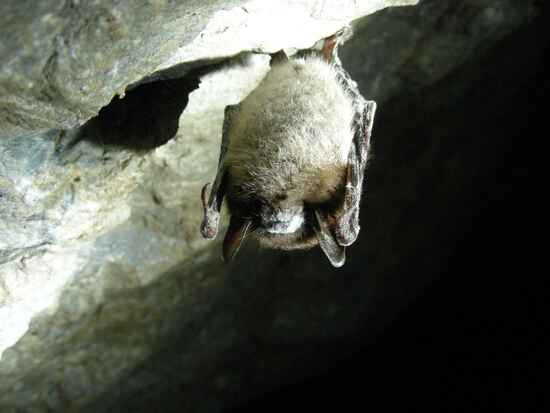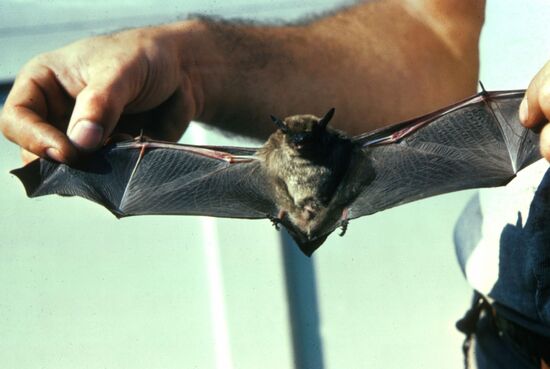Bats are a bit of a controversial animal. While they can cause definite harm, they have clearly defined benefits as well. This begs the question: are bats dangerous to humans? The answer might not be as straightforward as you think!
WHAT DO BATS LOOK LIKE?
Before we talk about whether bats are dangerous or not, we should cover some of the basics, starting with what kind of bats you’ll find in North Carolina:
- Little Brown Bats

These bats are very small: they grow to 3 ¾ inches at full size, although they do have leathery wings that can give them up to an 11-inch wingspan. Fur color is a dark brown with a touch of gray here and there, while their ears are round with a black hue.
- Big Brown Bats

These bats can grow up to 5 inches in length with a 14-inch wingspan; they have a body shade that ranges between light brown and darker brown, with ears, feet, and faces that are a consistent dark brown.
Brazilian Free-tailed Bat (AKA Mexican Free-tailed Bat)
These bats are comparatively a bit smaller in size compared to the others in the area, measuring around 3.5 inches. They have long tails, large feet, and large, wide ears compared to their head size, and are reddish, dark brown, or gray in color.
WHAT ARE THE SIGNS OF BATS?
Signs of bats in the home are relatively easy to spot, once you know what you should be looking out for. Bats are well known to roost in attics, so if you suspect a bat infestation, that’s the first place to investigate. Stains on your ceiling, squeaking sounds and a pungent odor comparable to ammonia are all signs of the presence of a bat colony. In addition to those, there are a few other visible signs:
- Dark, speckly droppings around your home
- Black, oily streaks near small entrance holes
- Piles of bat droppings in places that bats typically hide
PLACES BATS HIDE
Because bats are airborne creatures, they will typically try to hide at the highest point of your home, most notably your attic. However, if you don’t have an attic, that doesn’t mean that you are safe from a bat colony coming into your home. Because even large bats are relatively small creatures, they are able to hide in practically any small space. Some common places you’ll see them outside the attic include:
- The roof soffits and overhangs
- Wall voids
- Sheds
- Barns
- Chimneys and chimney flashing
- Basements
- Garages
SO, ARE BATS DANGEROUS?
The truth is, even though bats are not aggressive creatures, and are great for natural mosquito control, they do carry disease, including Rabies. In other words, they are definitely not the sort of pest that you want to take lightly if they have begun roosting in your home. Bats outside of your home aren’t much of a problem, but once they enter the home, they can become a problem.
TAKING CARE OF A BAT INFESTATION
At City Wide Exterminating, we offer a comprehensive bat control service that eliminates your bat problem quickly, safely and humanely. Here’s how it works:
- Inspection: Your bat expert inspects the problem site. Often there are places that must be inspected using ladders or specialty equipment so that we can provide you with an accurate report.
- Planning: We design a custom plan for your home or building to ensure that once we evict the bats, they are gone for good and don’t just move to a different spot on the structure.
- Eviction: When eviction day arrives, technicians will preventatively seal any place on the structure that bats would try to move to with the best quality sealants available and custom color blended metalwork. As the preventative work nears completion, one-way doors are installed near the bat roost sites, which will allow bats to leave, but not re-enter the structure.
Looking for bat removal services ASAP? Just get in touch!

